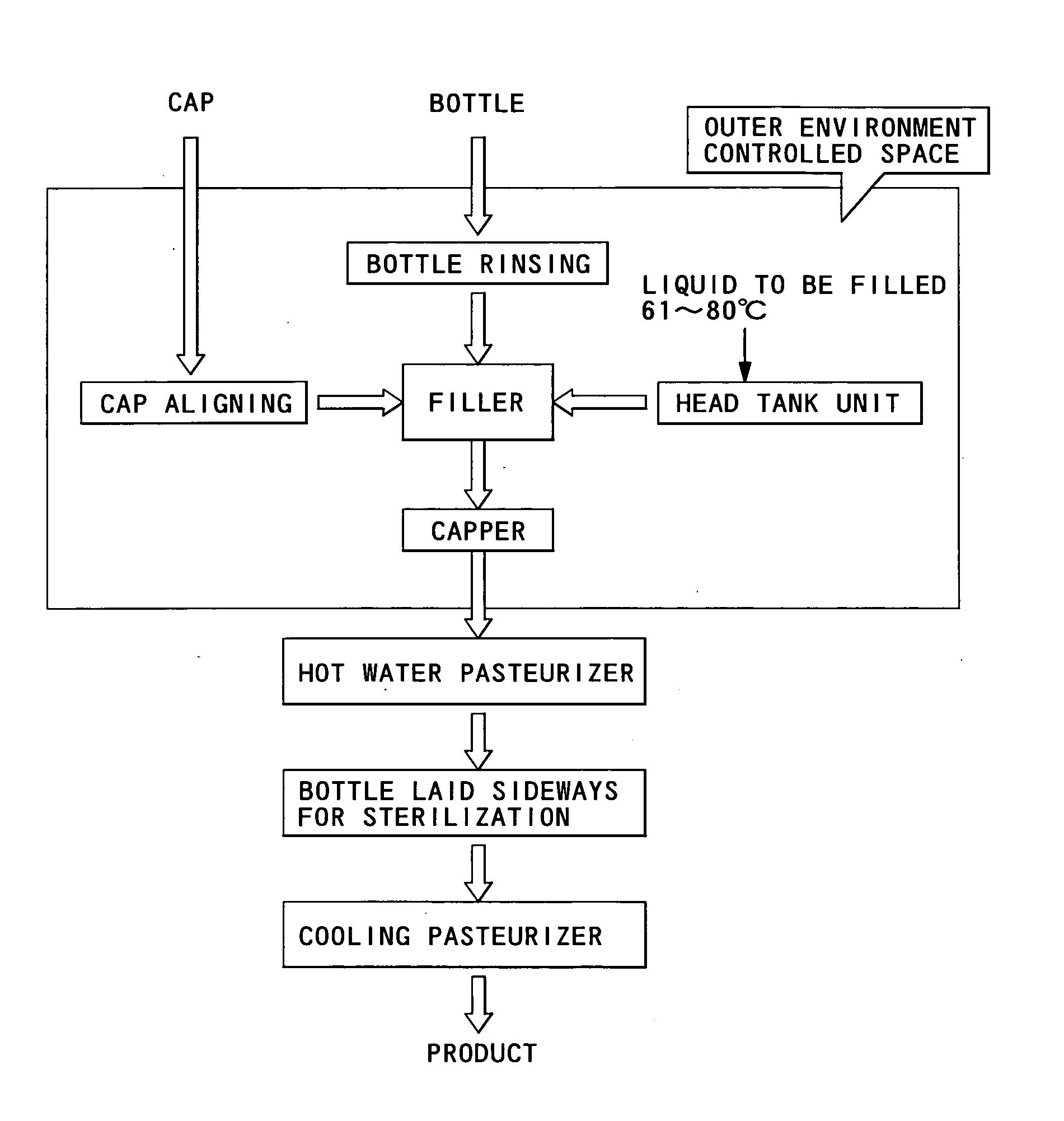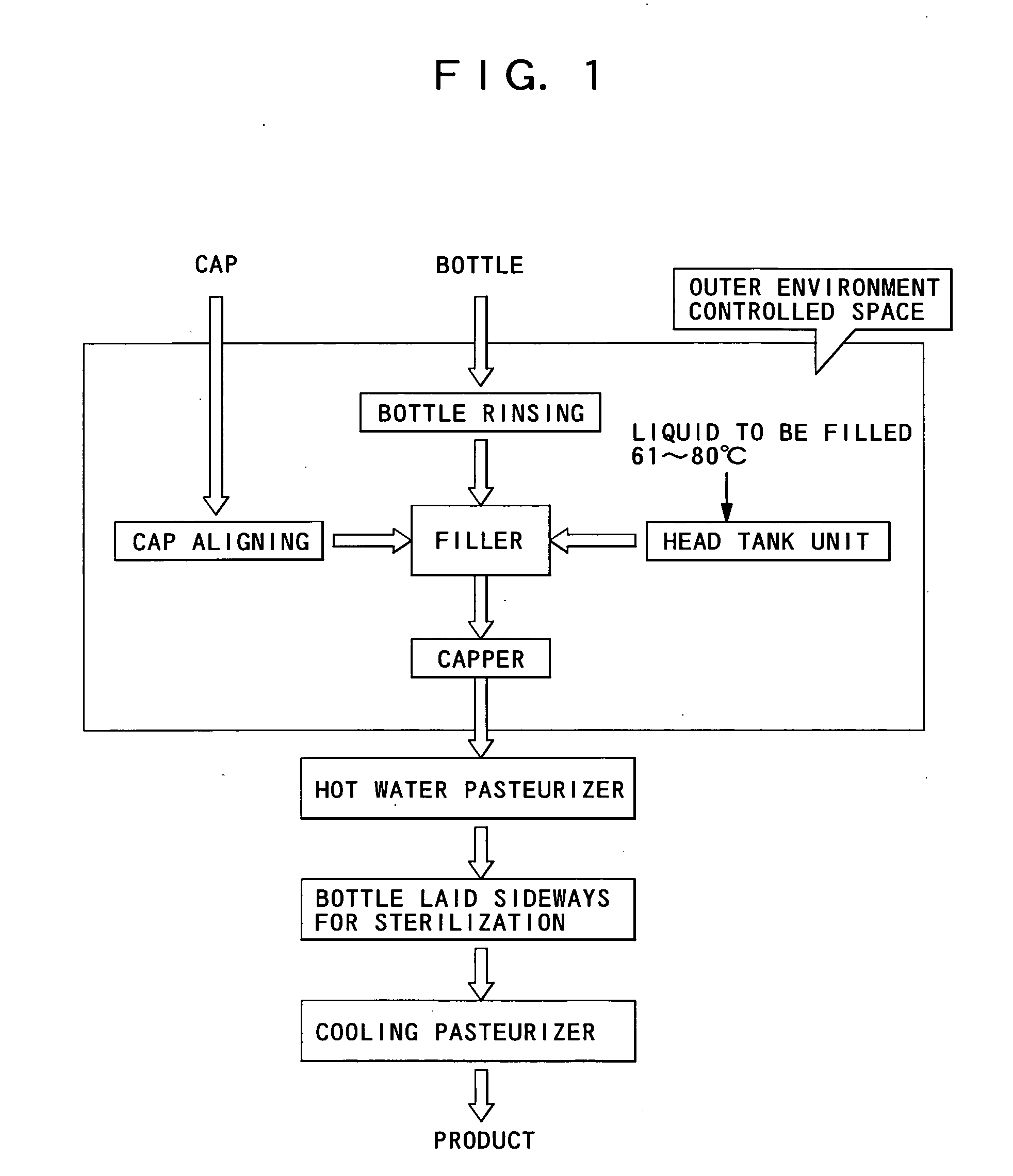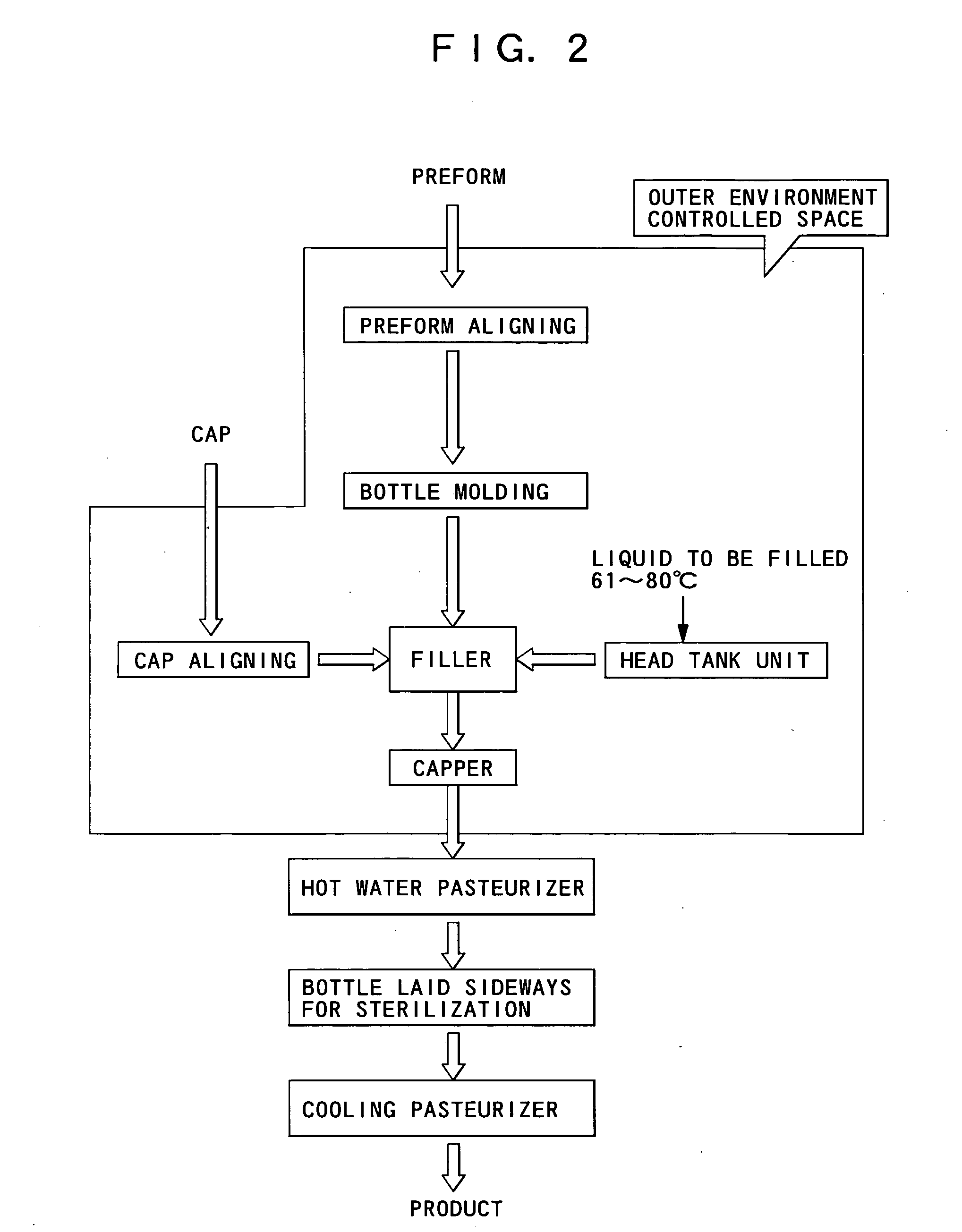Method for manufacturing contents contained in a container
a technology of contents and containers, applied in the field of manufacturing contents contained in containers, can solve the problems of large energy, long cooling period, and disadvantages of acid or low-acid drinks bottled in pet bottles, and achieve the effect of reducing internal pressur
- Summary
- Abstract
- Description
- Claims
- Application Information
AI Technical Summary
Benefits of technology
Problems solved by technology
Method used
Image
Examples
example 1
[0055] As a specimen of a bottle, 500 ml PET bottles each having a non-crystallized neck portion with a diameter of 28 mm were used. As a specimen of bacterium, Aspergillus niger ATCC6275 which was cultivated for 30 days in a potato dextrose agar medium was used.
[0056] Sterilized pure hot water was filled in these bottles at different temperatures shown in the following Table 1. A suspension of spores of the bacterium was added to the bottles at a rate of 106 cfu per bottle and, after capping the bottles, the bottles were laid sideways and held for a predetermined length of time. Then the bottles were cooled by a cooling pasteurizer. The number of the bacterium which remained in each bottle after the cooling step was counted and the effect of sterilization was measured (7 days in the potato dextrose agar medium) and the effect of sterilization was calculated on the basis of log (initial number of bacterium / surviving number of the bacterium). Results are shown in Table 1.
TABLE 1Te...
example 2
[0057] For measuring heat resisting property of the PET bottle having a non-crystallized neck portion, relation between moisture content of non-crystallized neck portion (undrawn portion) and Tg (glass transition temperature, DSC) was calculated and a holding temperature at which the bottle was deformed after filling of a drink in the bottle was regarded as the glass transition temperature and over and the heat resisting property of the bottle was determined from this temperature. Results of the measurement are shown in FIG. 4. From FIG. 4, it will be understood that there is a linear correlation between moisture content of the bottle and the glass transition temperature of the bottle and the smaller the moisture content, the higher becomes the glass transition temperature at the filling temperature of 60-80° C.
example 3
[0058] For measuring a state of drop in the internal pressure of the head space of the PET bottle having a non-crystallized neck portion caused by filling of a liquid in the bottle, relation between the filling temperature and the internal pressure of the bottle was measured by using the process shown in FIG. 1. Results of the measurement are shown in FIG. 5. From FIG. 5, it will be understood that internal pressure in the order of −3 KPa to −5 KPa can be obtained.
[0059] In sum, according to the present invention, by filling contents in a container at a temperature within a temperature range which is 61° C. or over and less than a glass transition temperature determined by moisture content of the container, and sterilizing the container at this temperature, a commercially sufficient degree of sterilization can be achieved and, therefore, a polyester container having a non-crystallized neck portion whose glass transition temperature is within this temperature range can be used where...
PUM
 Login to View More
Login to View More Abstract
Description
Claims
Application Information
 Login to View More
Login to View More - R&D
- Intellectual Property
- Life Sciences
- Materials
- Tech Scout
- Unparalleled Data Quality
- Higher Quality Content
- 60% Fewer Hallucinations
Browse by: Latest US Patents, China's latest patents, Technical Efficacy Thesaurus, Application Domain, Technology Topic, Popular Technical Reports.
© 2025 PatSnap. All rights reserved.Legal|Privacy policy|Modern Slavery Act Transparency Statement|Sitemap|About US| Contact US: help@patsnap.com



